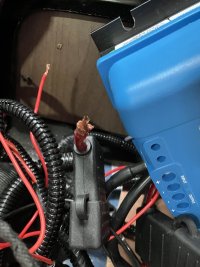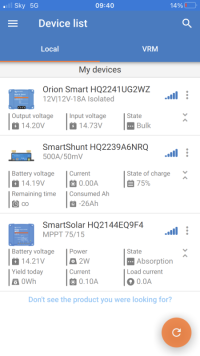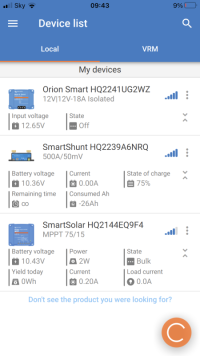Ok here goes (very mindful some of positive busbar share terminal, so hopefully doesn’t foul results).Here's a quick simplified wiring diagram of your setup (I hope). You likely have more elements such as fuses and maybe a bus bar but they can be ignored for the time being. With engine running and preferably charging on, try to measure and write down voltage between ground point (black dot) and each of the red dots in this wiring diagram:
1. Shunt battery side connection
2. Battery negative pole
3. Battery positive pole
4. The point where Vbatt feed to shunt connects to in positive wiring
5. The point where Victron charger output connects to in positive wiring
6. The point where Victron MPPT output connects to in positive wiring
7. Victron MPPT output negative terminal
8. Vicron charger negative terminal
9. Shunt chassis side connection
View attachment 268882
1, 2, 7, 8, 9 should read zero or very close to zero
3, 4, 5, 6 should read battery voltage or very close to it when charging is off, or higher when charging is on. They should also be very close to each other.
Across poles LB when off 13.28 when on 13.55
Across poles SB when off 12.37 when on 14.66
Shunt battery side connection 0.68
Battery -ve pole 0.54
Battery +ve 14.38
Shunt to +ve 13.42
Dc to dc +ve connection 14.3
Mppt +ve 13.8-14 (fluctuating)
Mppt -ve output (need to get into back of van)
Dc to dc - terminal 0.33 in one 0.41 in other
Shunt chassis side 0.33








